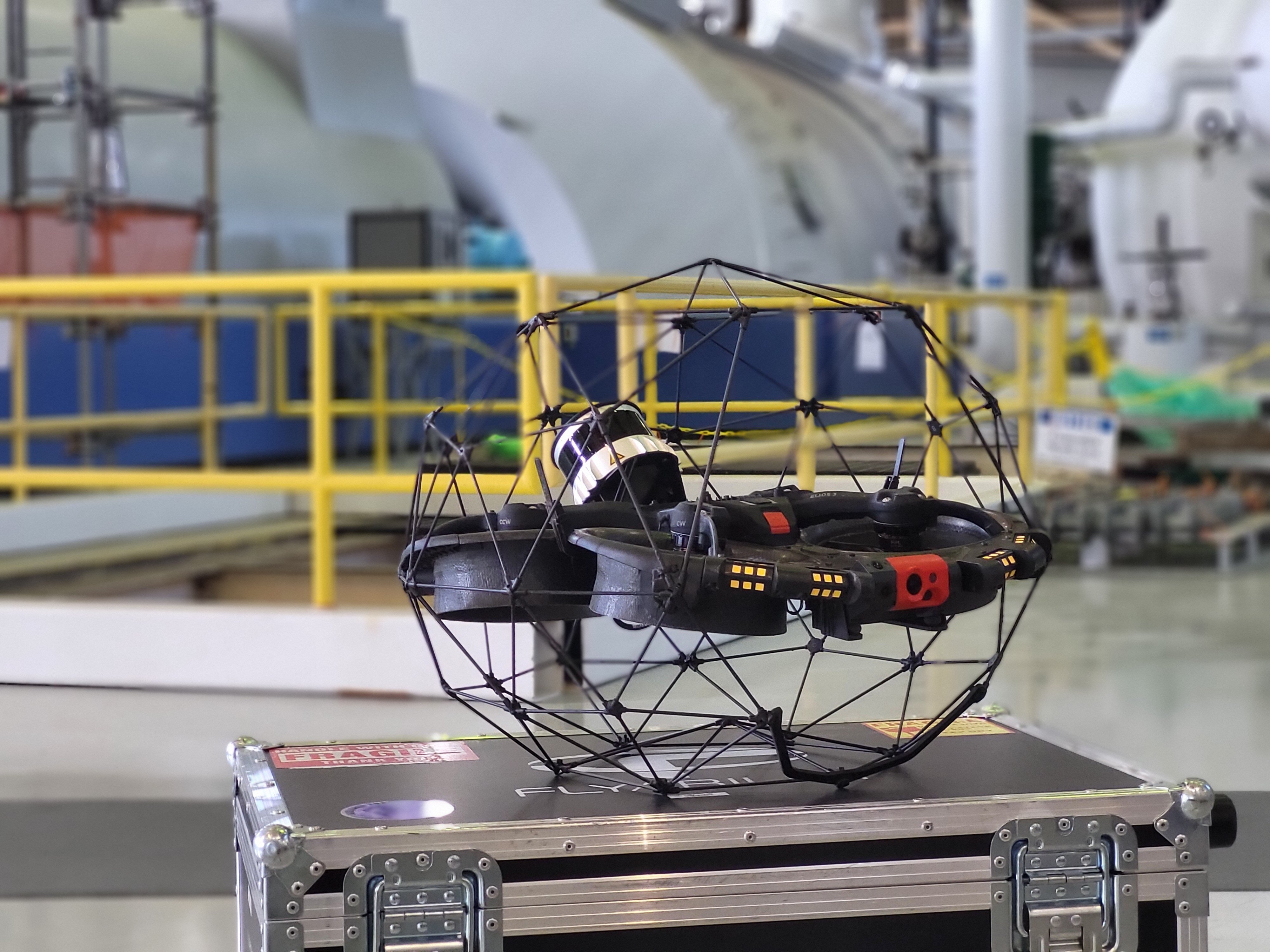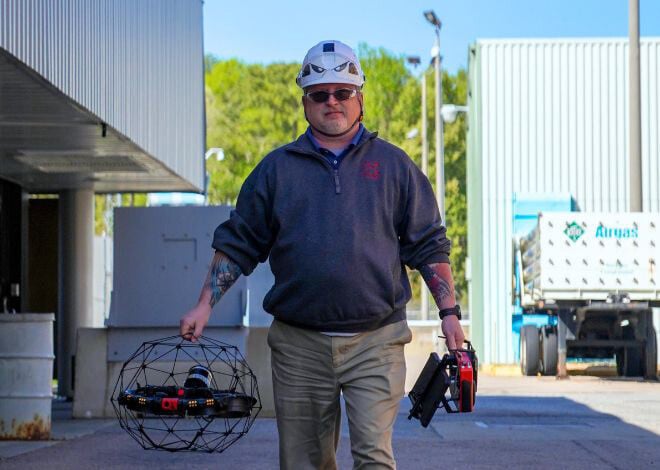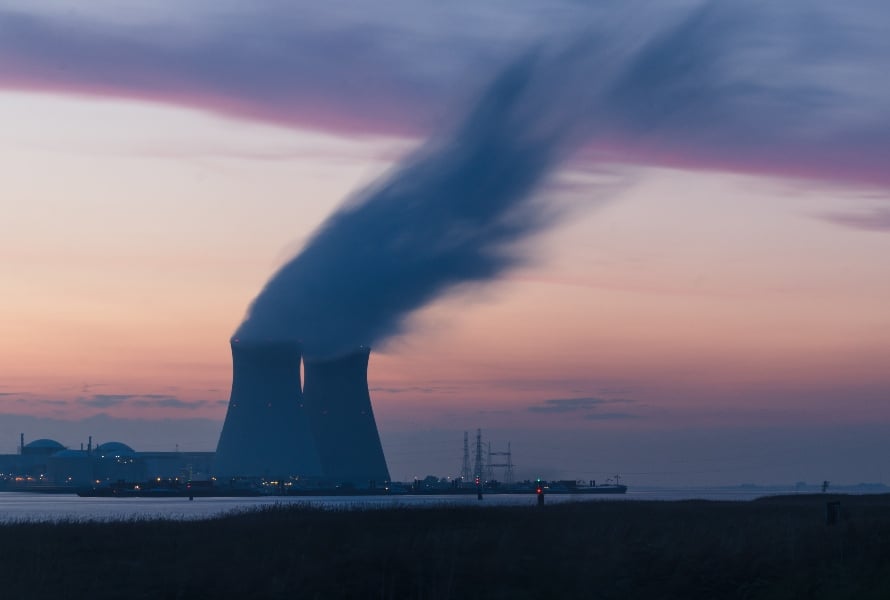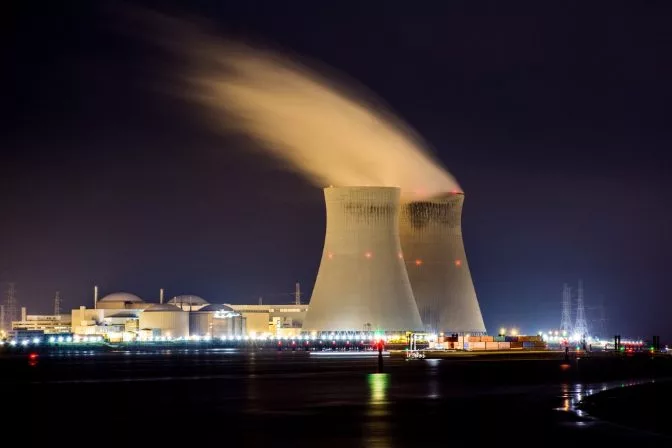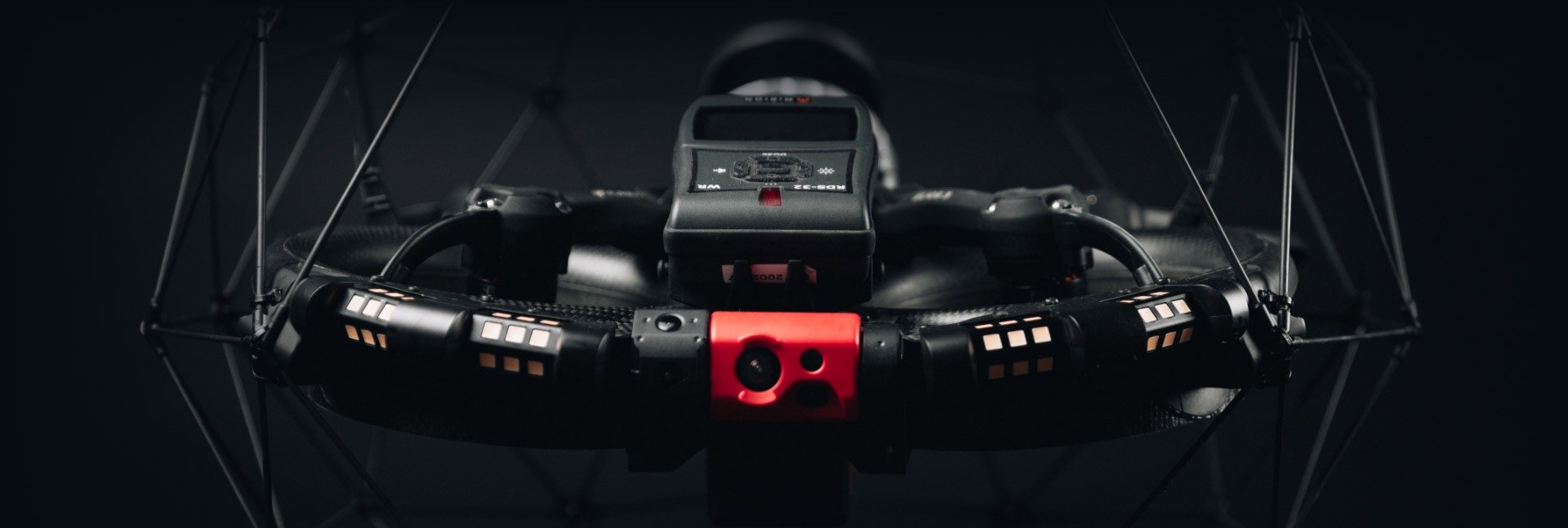- Blog >
- 7 Key Benefits of Drone Inspections in Oil and Gas
7 Key Benefits of Drone Inspection in Oil And Gas
Inspectors working in the oil and gas industry have been realizing significant benefits from using drones in their inspections for several years now.
For external inspections, oil and gas professionals have been using outdoor drones to collect visual data reflecting the condition of assets, avoiding the need to collect this data by physically standing in front of them.
For internal inspections, indoor drones like Flyability’s Elios 3 have been helping inspectors working in oil and gas to collect visual data and ultrasonic thickness measurements inside assets that require periodic inspections, such as those required by API guidelines.

An Elios drone being used to inspect a tank remotely
Some of the most common assets where indoor drones are being used for internal inspections include:
- Chimneys and smokestacks
- Offshore rigs
- FPSOs
- Drilling ships
- Jetties
- Storage tanks
- Refineries
The traditional approach for inspecting these assets would require an inspector to physically enter them, exposing the inspector to all the potential hazards that come with confined space entry.
Using a flashlight and camera, the inspector would move through the asset while recording visual data, taking ultrasonic thickness measurements, and looking for possible flaws that might need further inspection or maintenance.
In many cases, inspectors have to stand on scaffolding or use rope access to conduct these internal inspections, exposing them to further hazards.
But high quality indoor drones are helping reduce—and in some cases eliminate—the need for inspectors to enter these assets to collect visual data, making internal inspections safer and cheaper.
Here are the seven key benefits of drones inspections for the oil and gas industry.
1. Reduced Downtimes
Inspection drones can significantly reduce turnaround times for internal inspections by removing the need for building temporary structures, such as scaffolding.
Just setting up and taking down scaffolding can take several days, or even weeks—time in which the asset has to be out of action.
During a diesel tank inspection at an oil depot, inspectors were able to reduce the amount of time required for the inspection from two weeks to just four hours using an Elios drone.
Every hour of downtime represents a significant loss of revenue, so avoiding 13 days and 20 hours of extended downtime meant a significant savings for the depot.

An Elios 3 drone flies around confined spaces quickly and safely, using its powerful camera and LiDAR scanner to collect data
2. Safety
Inspectors conducting internal inspections in the oil and gas industry face confined space entry, work at height on scaffolding, and combustible gas exposure, all of which expose them to potential hazards that could seriously injure or even kill them.
Indoor drones significantly reduce the need for inspectors to face these hazards.
By sending a drone like the Elios 3 into the asset instead of themselves, inspectors can collect visual data and ultrasonic thickness measurements remotely while standing safely outside, improving the overall safety of the inspection by removing the hazards listed above. In addition, the drone’s flammable gas sensor can alert them to the presence of harmful gases which in turn helps pilots manage dangerous situations safely.
Furthermore, if maintenance personnel need to enter the asset to address flaws found during the inspection, their time inside it will be reduced by gathering data remotely beforehand.
Thanks to the visual data collected by the drone, they’ll know exactly where to work once inside. And if scaffolding is needed, they’ll know right where to place it.
3. Savings
In an oil depot case study, the cost for the inspection was reduced by 96% using an indoor drone.
Savings like these are normal with drone inspections for oil and gas. The drones make inspections safer and faster, alongside cutting costs such as scaffolding.
Tüpraş, the largest energy company in Turkey, reduced its downtime for an FCC unit inspection by two and a half days by using an indoor drone. The resulting savings from the downtime reduction were estimated at close to half a million dollars.
This represents significant savings, since the cost of materials and labor required to erect and take down scaffolding can be tens or even hundreds of thousands of dollars—all for a single inspection.
4. Access
An indoor drone can easily access tight, confined spaces and collect visual data reflecting the conditions there. In fact, that’s exactly what indoor drones were designed to do. The Elios 3 can fit into spaces as small as 50x50 cm to complete inspections.
Because the Elios drones are surrounded by a protective cage and designed to be collision tolerant, they can bump into surfaces and continue flying.
This feature lets inspectors slide them along a wall and fly right up to a surface, allowing them to get a clear vantage point so they can see whether any defects are present. The Elios 3’s UT payload also has a bendable arm so it can withstand going through closed spaces without being snapped off.

The Elios 3 drone with its UT payload taking an ultrasonic thickness measurement
This kind of access can have a big impact on savings and safety for oil and gas operations.
In an FCC unit inspection, for example, inspectors typically have to cut a hole into the unit and rappel inside of its cyclone and riser using ropes.
But an indoor drone removes the need for inspectors to go into the unit, as well as the need for a hole to be cut into it to allow access for manned entry.
5. Increased Frequency of Inspections
Because indoor drones can quickly collect visual data inside of assets that are hard to access physically—like storage tanks, or an FCC unit—they can be used for quick spot checks. This benefit of drone inspections for oil and gas assets is crucial as it makes it easier to determine degradation rates of material or track the progress of a defect.
Being able to quickly and regularly get visual data on the condition of an asset can lead to improved maintenance procedures overall, ultimately resulting in reductions not only in scheduled downtimes but also in unscheduled downtimes, which might take place due to equipment failure.
6. High Quality Data
Inspectors in the oil and gas industry are using drones to get high quality visual data showing minute details inside the assets they’re inspecting. The Elios 3’s 4K camera gives clear video and photos to pilots while it simultaneously scans its surroundings with centimeter-accurate LiDAR. This means that when a pilot finds a point of interest (POI) during flight, they can tag the location of the POI in the LiDAR scan. This results in a 3D model of the inspected asset that has the locations of defects or faults clearly marked. This eases communication with maintenance team and streamlines decision making.
In addition, the Elios 3 is modular in design, meaning it can carry the ultrasonic thickness probe too. This probe, launched in 2024, is capable of gathering accurate thickness measurements in assets ranging from ship hulls and ballasts to storage tanks. The data has been certified by class societies, meaning it can be used for official reports.

High quality visual data, UT measurements, and laser scans can provide insights for operations, engineering, survey, and safety departments within an oil and gas operation, which can then be used in the ongoing maintenance of an asset.
7. Data Localization
Inspector 5.0 is Flyability’s software made specifically for inspection professionals. In the software, inspectors can pinpoint the location of defects found in their inspection footage so that they can return to them in future inspections or share them with other stakeholders in the maintenance process.
In addition, with the Asset Management feature, pilots can map bridge the gap between data capture and asset management itself. The Elios 3’s processing and reporting workflows in Inspector are streamlined so data from multiple flights can be merged and provide a single view of the asset. This comprehensive overview then gives a clear picture of the asset condition and simplifies reporting. This clear data management is yet another benefit of drone inspections for oil and gas as drone surveys provide clear information and a long term record of asset conditions.

An inspection being viewed with Inspector, with the LiDAR point cloud on the left and visual feed along with points of interest on the right
The Benefits of Drone Inspections for Oil and Gas
Drones offer a safer and more cost efficient way to complete inspections in oil and gas. The remote access to confined spaces ensures the safety of inspectors without compromising on data quality. The Elios 3, with is variety of payloads and proven capabilities in this sector, is paving the way for a revolution in asset management for oil and gas. Using this drone to create digital records based on accurate data will streamline operations, minimize downtime and above all, keep inspectors safe. That is, after all, the greatest benefit of drone inspections in oil and gas.
Discover more about oil and gas drones along with the Elios 3 on our industry page!


